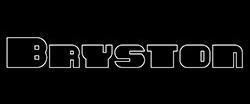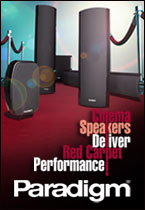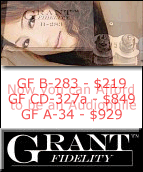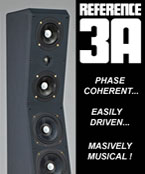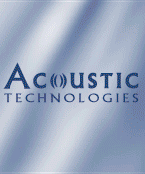To many Canadians, remote control devices can be traced back to the days of the Rogers Cable hard-wired “clicker” box, back in the early 1970s. Luckily, thanks to invention, somewhere along the way we’ve lost the wires. As home theatre systems became more complex, the number of remote controls populating our coffee tables has increased. Essentially each component in our AV systems is accompanied by a remote control which can lead to more confusion than convenience. The solution? A universal remote. This article will explore and explain the features and benefits of a number of currently available universal remote control solutions from the simplest to the most sophisticated.
First, there are two common methods of emitting and receiving commands from remote control devices, infrared (IR) and radio frequency (RF). The IR remotes are the most common and require line of sight to the device being controlled. The RF remotes are not as common and can be used from another room without need for line of sight. One can purchase an outboard device to convert IR to RF and vice versa for devices that are configured accordingly or for equipment hidden in a cabinet.
A universal remote is designed to replace all the remotes on your coffee table and simplify the operation of your home theatre system. It can duplicate all commonly used functions of your existing remotes and is able to combine several button presses (from different remotes) into a “one click” solution through macro programming. The sophistication of one’s system will dictate the level of performance required from the new remote which can include advanced functionality such as control of a home network, lighting system, window treatments, projection screen deployment and other assorted home automation features.
You may not know it, but you likely already own a simple universal remote. That’s because virtually all digital cable boxes and satellite receivers are supplied with a very basic universal remote. These remotes can be relatively easily configured to control your cable or satellite box, TV and even a DVD or Blu-ray player.
However a growing common denominator for home theater set-ups is the AV receiver -whose function is to select, decode and playback all video and audio sources in the system. Pretty well all AV receivers are supplied with a programmable universal remote control that can be configured to control the basic functions of the various pieces of equipment that make up the system. This style of remote is considered to be the most basic of programmable universal remote controls, although higher end AV receivers are supplied with more sophisticated remotes. These remotes can be configured to work with your components in one of two ways. First, you can enter the code for each of your AV components – these codes, found in the AV receiver’s manual, are provided for the vast majority of components found on the market today. If you can’t find your component in the code list, you can point its remote at the universal remote and “clone” button functionality one button at a time. “Macro” buttons on these remote can be configured to turn on specific components and select various inputs to simplify home theatre operation but they tend to be tricky and time consuming to configure.
Most universal remotes that come supplied with a component leave much to be desired however and hence many home theatre enthusiasts choose to upgrade. Today, many types of programmable universal remotes are available from manufacturers such as One-for-All, Logitech Harmony, Universal Remote Control, Nevo, RTI, Acoustic Research, NXG and Philips. Remotes from these manufacturers offer much greater configuration flexibility, more convenient button layouts, more elegant user interfaces and backlit buttons. Mid-range models offer completely customizable colour LCD or OLED screens, rechargeable batteries, while top-of-the-line remotes even offer a touch screen interface. Some of these remotes are very simple to configure but other more complicated ones may require the help of custom installer. Let’s examine the various options found in programmable universal remotes for the least expensive to the most extravagant.
The first step up from the remote supplied with your AV receiver is a universal remote that has backlit buttons – a feature that most stock remotes lack. The backlit buttons will easily allow you to control all of your components in a darkened home theatre. These remotes start at as little at $20 and can usually control up to five different components. One example is a Universal Remote Control URC-R6 which retails for about $26.
The next set up is a remote that substitutes macro buttons for custom activities such as “Watch TV” or “Watch a DVD” that appear on a small, backlit monochrome screen. Pressing the button next to the activity displayed on the screen will power on all required components and switch to appropriate audio and video inputs. The Logitech Harmony 510 ($99) is a perfect example of such a remote. It should be noted that Logitech Harmony remotes have a really great reputation for ease of programming. To program these remotes you need to install Logitech provided software on a PC or MAC and connect the remote to your computer using a USB cable. The software will prompt you for the brands and model numbers of your components and then ask you a number of questions about how you control them. Based on your answers, the software will download codes specific to your components from its online database into your remote. When finished, the remote’s screen will display various home theatre activities such as “Watch TV”, “Watch a DVD” or “Listen to a CD”. With the click of a single button, the remote will power on all required components and switch to appropriate audio and video inputs.
The Kameleon 8 from All For One (approx. $99 US) lands somewhere between remotes with monochrome screens and full-colour screens. This remote uses a unique combination of electroluminescent backlighting and a segmented LCD display. The result is a screen that occupies the entire surface of the conventionally shaped remote – there are no hard buttons. Unlike the Harmony 510 above, the Kameleon 8 doesn’t allow you to program clearly labled activities but instead offers 4 macro keys (each can consist of up to 16 sequential button presses). The Kameleon controls up to 8 devices and its pale blue LCD screen automatically turns on with any movement and shuts down after 7 seconds of inactivity. Once the remote is programmed and an audio/video component is selected, the remote displays only buttons that are associated with the component. A set up menu is built into the remote, so there is no need for an internet connection or a PC.
Moving up the feature ladder is a universal remote that upgrades the small monochrome screen to a slightly larger colour LCD screen. A few examples are the Logitech Harmony 700 ($179), the Universal Remote Control Digital R50 ($149 US), the Nevo C2 ($229 US) and the Philips Pronto TSU9200 ($300 US approx). The Harmony 700 offers all the same features as the Harmony 510 but has a slightly larger colour screen and can be recharged with the supplied AC adapter, instead of using regular batteries. The URC Digital R50 also features a colour LCD screen and is programmed through a Setup Wizard displayed directly on its screen – no Internet or PC required.
Continuing up the feature ladder, we arrive at remotes that offer RF capability, which is essential if your home theatre components are hidden out of sight. Some manufacturers even offer RF extenders which will allow you to control components that are up to 100 feet away. Remotes in this price range are also usually supplied with a charging dock. An example of a remote in this category is the Logitech Harmony 900 ($449) and the Nevo C3 ($299 US plus $99 US for an RF base). The tablet-style Logitech Harmony 1100 ($449) adds a much larger colour touch screen that is customizable.
At this point, we are arriving at the top echelon of universal remote controls, where the prices jump quickly and you may require the assistance of a custom installer to properly program the remote for you. These high-end remotes are not only capable of controlling your home theatre components but also home automation systems such as lighting controls, powered window coverings and HVAC. Nevo offers two products in this category – the Q50 ($699 US) and the S70 ($1199 US). Both these remotes offer 2-way Z-Wave control for home automation devices as well as 2-way serial (RS-232) control for third party devices such as the iPod. Both models combine some hard buttons with a fully customizable colour touch screen – the Q50 has a 2.5 inch screen and the S70 has a 3.5 inch screen. Additionally, the S70 offers advance capabilities through WiFi which include the ability to view web content (from sites optimized for mobile devices), control digital music, and View and control IP based security cameras and monitors.
RTI takes the idea of a high-end remote yet a few steps further. The company’s T4 Universal Controller is a tablet-style remote which includes a 6.4 inch colour touch screen LCD panel. The touch screen displays the GUI provides wireless playback of video, JPEG images and web pages from a home network. There is a pair of tiny stereo speakers built into the remote with 32 MB of memory for unlimited sequential step Windows/USB-based programmability for macro setups. Fully IR and RF capable, this remote will control virtually anything you throw at it. Priced at $2499 US, the T4 remote can also be table or wall mounted.
The crème de le crème of remote controls come with all the functionality of the above mentioned remotes, but come with much larger colour LCD touch screens, just a few hard buttons, and can be customized to your heart’s content. Many of the remotes in this category can be held in your hands but come with docking stations that can be fixed to a table top or a wall. The Philips Pronto TSU9800 is the latest and greatest iteration from the Pronto line-up and offers control of multi-room audio systems. It features a 6.4 inch colour LCD touch screen which displays large intuitive icons and menus, which can be completely customized. The TSU9800 offers WiFi or hard-wired Ethernet connectivity to a home network via its docking base. There are a few hard buttons and a rotary wheel to scroll through the displayed options. RF and IR capable, the unit also comes with a built-in mini speaker and pre-programmed Lutron lighting control for various mood lighting options. The unit is programmable via ProntoEdit Professional software and has 64 MB of memory for up to 250 sequential steps for each macro. The TSU9800 is simple to use, has a clean aesthetic and is available for $2399 US.
Before committing to a purchase, do your research online to make sure that remote you’re about to purchase offers the functionality and features that you require. Buying a universal remote should be a fun process. I leave you with a list of website for the various manufacturers in the sidebar.
Click here to discuss this article on the CANADA HiFi Forum

